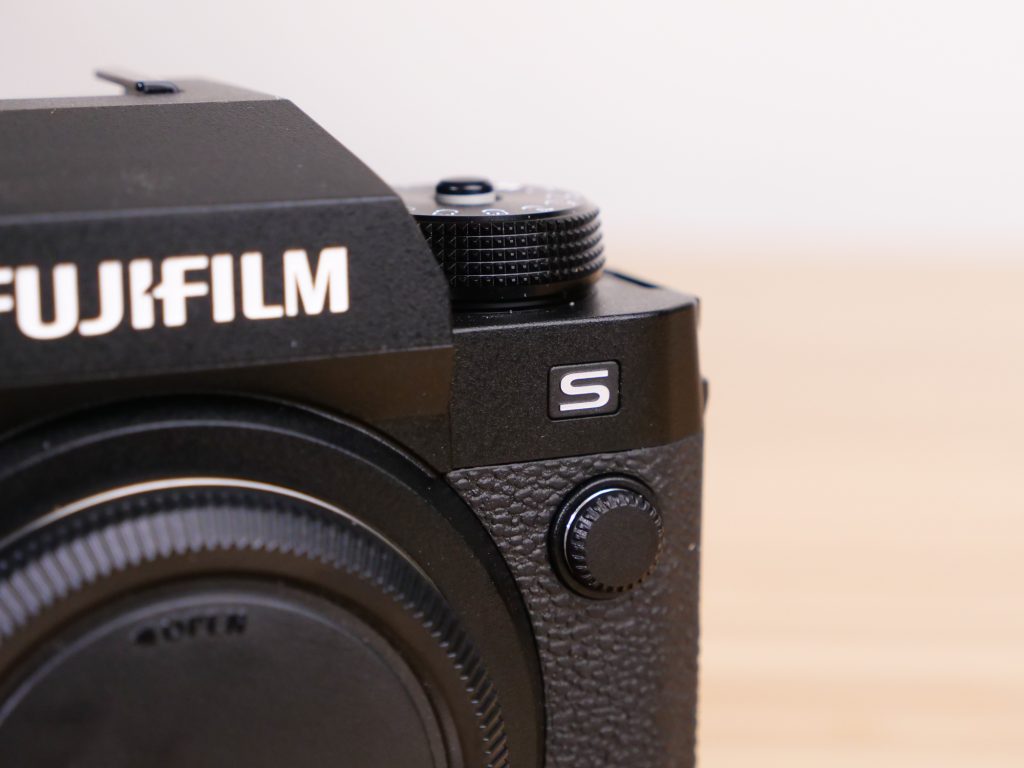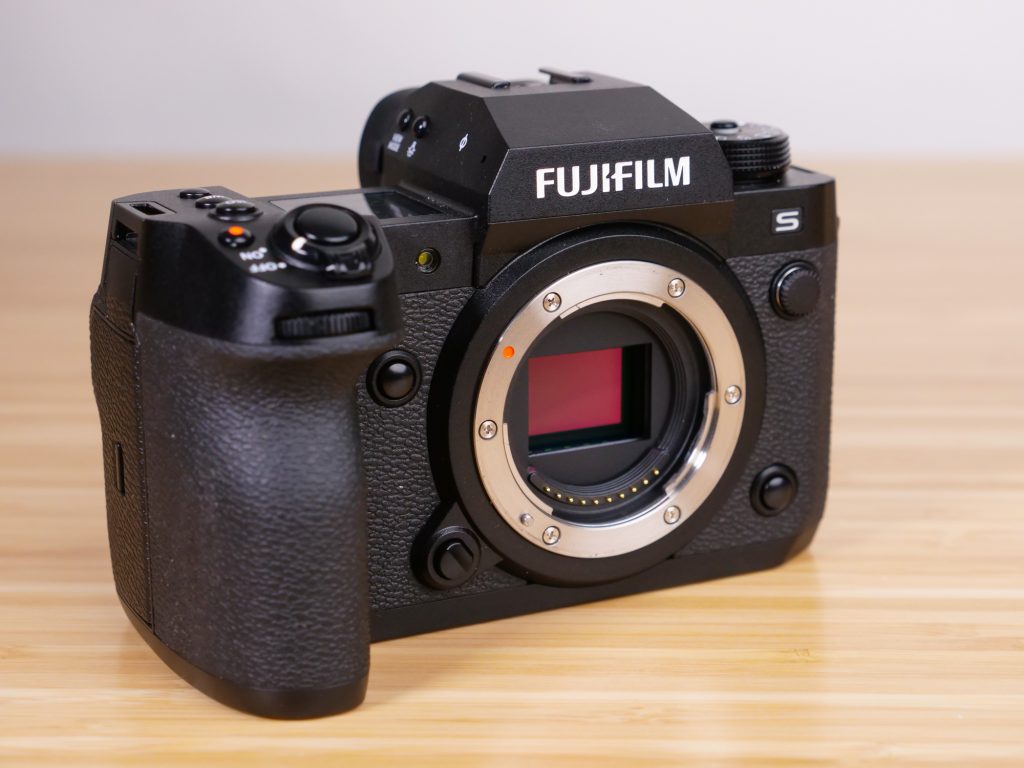The Fuji X-H2 and X-H2S are two of the newest high-end cameras in the Fujifilm X system. Although these two cameras have many similarities, they’re different in a few important ways that will likely make one of them a much more appropriate choice for the way you want to use your camera.
In this article, we will cover the similarities and differences between the Fuji X-H2 and X-H2S to help you decide which of these cameras is right for you.
Note: Fuji Resource may receive a commission for items you purchase from this page, at no additional cost to you. For more information, please see our affiliate link policy.
Similarities Between The Fuji X-H2 and X-H2S
The X-H2 and X-H2S are similar in many ways. In fact, their outward appearance is so similar that you could easily mistake one camera for the other–the only difference is that the X-H2S has a small “S” emblem on the front nameplate of the camera.

Both cameras use an APS-C sensor size with the Fujifilm X lens mount, and are the exact same physical size and weight. Both include a fully articulating screen and have identical top LCD displays and electronic viewfinders. The cameras have the same set of I/O ports and each has a dual card slot configuration with one UHS-II SD card slot and one CFExpress Type B slot.
The X-H2 and X-H2S both use a PSAM (Program, Shutter, Aperture, Manual) control scheme, which is similar to most mirrorless cameras but somewhat unique within Fuji’s lineup. Many of Fuji’s other cameras feature a set of manual dials for controlling the aperture, shutter speed, and ISO. Although many Fuji fans prefer the manual dials, the PSAM dial is something you’re more likely to be familiar with if you are coming from another camera brand.
These are only a few of the shared features between the X-H2 and X-H2S, but as you can see, these two cameras are extremely similar. In the next section, we’ll look at the differences between the cameras.
Differences between the Fuji X-H2 and X-H2S
The primary difference between the X-H2 and X-H2S is the camera sensor. The X-H2 uses a 40 megapixel backside-illuminated (BSI) X-Trans 5 HR sensor, while the X-H2S uses a 26 megapixel stacked X-Trans 5 HS sensor. This difference in sensor is more than just a difference in resolution–it impacts several of the cameras’ capabilities and is the cause of the key differences between the X-H2 and X-H2S.

Photos
The 40 MP sensor in the X-H2 is the highest-resolution APS-C camera sensor in existence, and is a substantial resolution upgrade over previous Fujifilm X cameras. It provides plenty of resolution for making large prints or cropping to a smaller area of the image. By all accounts, this is an excellent sensor and makes the X-H2 an ideal photo camera.
One issue to be aware of with the new 40 MP sensor is that many of Fuji’s older APS-C lenses aren’t necessarily able to resolve images at that resolution, meaning you can’t take full advantage of the 40 MP of resolution when you use those lenses. This likely isn’t a major factor in practice, and Fuji is updating their lens lineup to support the higher resolution sensor, starting with their most popular focal lengths.
On the other hand, the X-H2S’s 26 MP sensor is a similar resolution to Fuji’s previous APS-C offerings. While 26 MP is a competitive resolution among other cameras in a similar price range and size, it’s not a class leader. The stacked sensor in the X-H2S has advantages that we’ll see in the other categories, but for taking photos, it’s not quite at the level of the X-H2.
Video
For shooting video, the X-H2 has one notable advantage over the X-H2S: it can shoot 8K video at up to 30 frames per second, and is one of the most affordable mirrorless cameras with that capability. For lower resolution shooting, it can shoot 6.2K at 30 fps (albeit in 16:9 rather than the 3:2 open-gate mode offered by the X-H2S), 4K at up to 120 fps, and 1080p at up to 240 fps. Additionally, it supports all of the same recording formats and codecs as the X-H2S, including ProRes internal recording and RAW output over HDMI.

There’s no doubt that the X-H2 is highly capable as a video camera, but the stacked sensor on the X-H2S offers several benefits that video shooters will appreciate. The X-H2S maxes out at 6.2K, but can record that resolution in an open-gate 3:2 format that uses the entire sensor area. It matches the 4K and 1080p maximum frame rates of the X-H2.
Because the X-H2S’s stacked sensor can read data faster than the non-stacked X-H2, the X-H2S exhibits better rolling shutter performance than the X-H2. The X-H2 is not a particularly bad performer in terms of rolling shutter (it’s roughly in line with Sony full-frame cameras, such as the A7SIII) but if you shoot fast-paced scenes, you may prefer the X-H2S.
The X-H2S also offers a key advantage when shooting in the F-Log2 log color profile. When shooting at up to 4K 30 fps, the X-H2S will read the sensor in F-Log2 in 14-bit instead of 12-bit, while the X-H2 always reads in 12-bit. In practice, this does result in noticeably improved dynamic range from FLog2 on the X-H2S.
Autofocus
Although both the X-H2 and X-H2S have excellent autofocus capabilities, the X-H2S exhibits slightly faster autofocus speed over the X-H2. This is because both cameras read autofocus information from the sensor on every other frame, and the X-H2S’s faster sensor read speed allows it to gather autofocus information more quickly.
Price
Regardless of your feelings on any of the other differences between these cameras, it’s impossible to ignore the price difference between the X-H2 and X-H2S. At the time of this writing, the X-H2 is priced at $2,000 USD, while the X-H2S comes in at $2,500 USD. This price difference is substantial, especially given that it’s enough to cover (or nearly cover) the cost of a decent all-around lens for the camera.

Should You Buy the Fuji X-H2 or the X-H2S?
As you can see from the differences between the X-H2 and X-H2S, they differ in a few important ways that mostly come down to whether you prioritize photo or video. The X-H2’s 40 MP sensor offers unprecedented resolution in an APS-C camera and is an ideal choice if you want to produce large prints or have room to crop in on your images.
On the other hand, if you’re primarily a video shooter, the stacked sensor in the X-H2S offers some benefits you’d likely find valuable. Its superior rolling shutter performance, 14-bit FLog2 readout, and 6.2K open-gate recording are all tangible improvements over the X-H2 for video shooting. Of course, you do give up the 8K capability of the X-H2, so if 8K is critical for you, you’ll need to stick with the X-H2 for video.
In reality, it’s hard to go wrong with either of these cameras, no matter what type of shooting you lean toward. They both offer a great set of functionality that puts them at the leading edge of Fuji’s X mount lineup. Unless you need to push to the outer limits of resolution or sensor read speed, you’re very likely to find that either of these cameras can more than meet your needs for photo and video shooting.
You can view the Fuji X-H2 here:
You can view the Fuji X-H2S here: